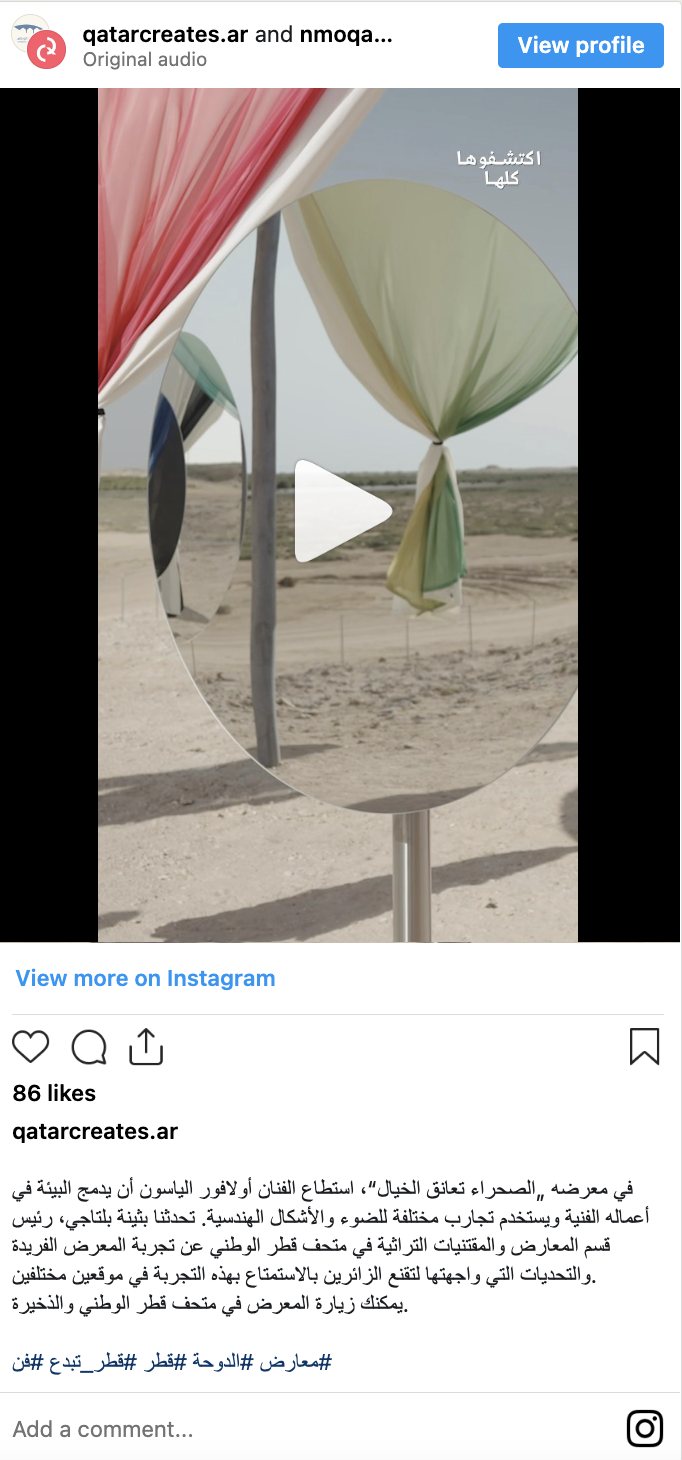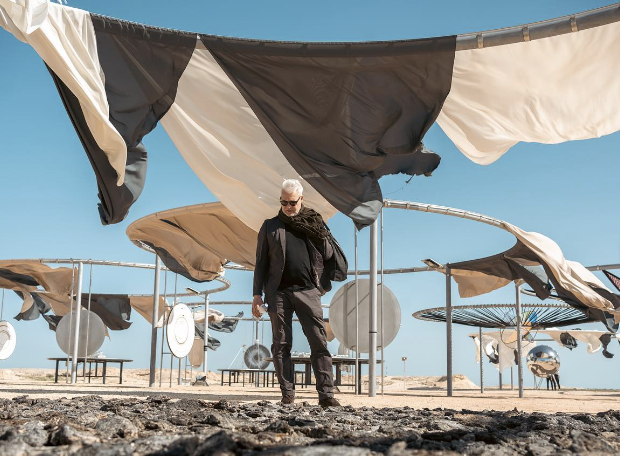The new “The Curious Desert” installation highlights the issues of climate change
New artwork by Olafur Eliasson has created a buzz in Qatar, where authorities have rolled out initiatives to turn the country into an open air canvas.
The new “The Curious Desert” installation, located in Qatar’s Al-Thakhira Mangrove Reserve, includes a 12-site-specific set that highlights the issues of climate change and is Eliason’s first solo exhibition in the Gulf.
The exhibition, located in the desert landscape and at the National Museum of Qatar, features temporary pavilions that reflect and interact with natural phenomena such as wind, sun, and sand. Eliasson’s artworks aim to create a dialogue about the fragility of the environment and the impact of the climate crisis.
The outdoor artworks at the Al-Thakhira Mangrove Reserve, which are part of the exhibition, incorporate elements of the natural environment such as fabric and black, shiny obsidian.
The “Solar Incense Burner” uses a glass sphere to ignite scents that are characteristic of Qatar such as oud, musk and amber and the surrounding Gulf region. The scent burns for an hour and marks the time of day through its aroma.

“The works respond to the desert and to nature but also ourselves within that relationship as well,” Eliasson told Arab News.
Eliasson’s installations examine optical phenomena and man’s relationship with nature. Some of the artworks use innovative drawing machines that create works inspired by the sabkha habitat in Qatar.
The artist collaborated with an ecologist to conduct a survey of the site near Al-Thakira to ensure the protection of its native plants and living, non-human beings.
“These artworks are a way to discuss what geopolitics doesn’t say — it’s a way to connect close to local culture and to the natural environment,” the artist said.
The exhibition also features Eliasson’s key works from his 25-year career, including “The Living Lighthouse,” an installation that uses colourful lights to wrap around a circular room, and “Research Map,” a wall filled with research and ideas that reflect the artist’s thoughts and inspirations.
Eliasson believes that culture can play a vital role in creating change for the climate and can be part of the food chain for global change. He hopes that his artworks will encourage people to appreciate the beauty and importance of the natural landscape and the non-human agencies that work within it.







